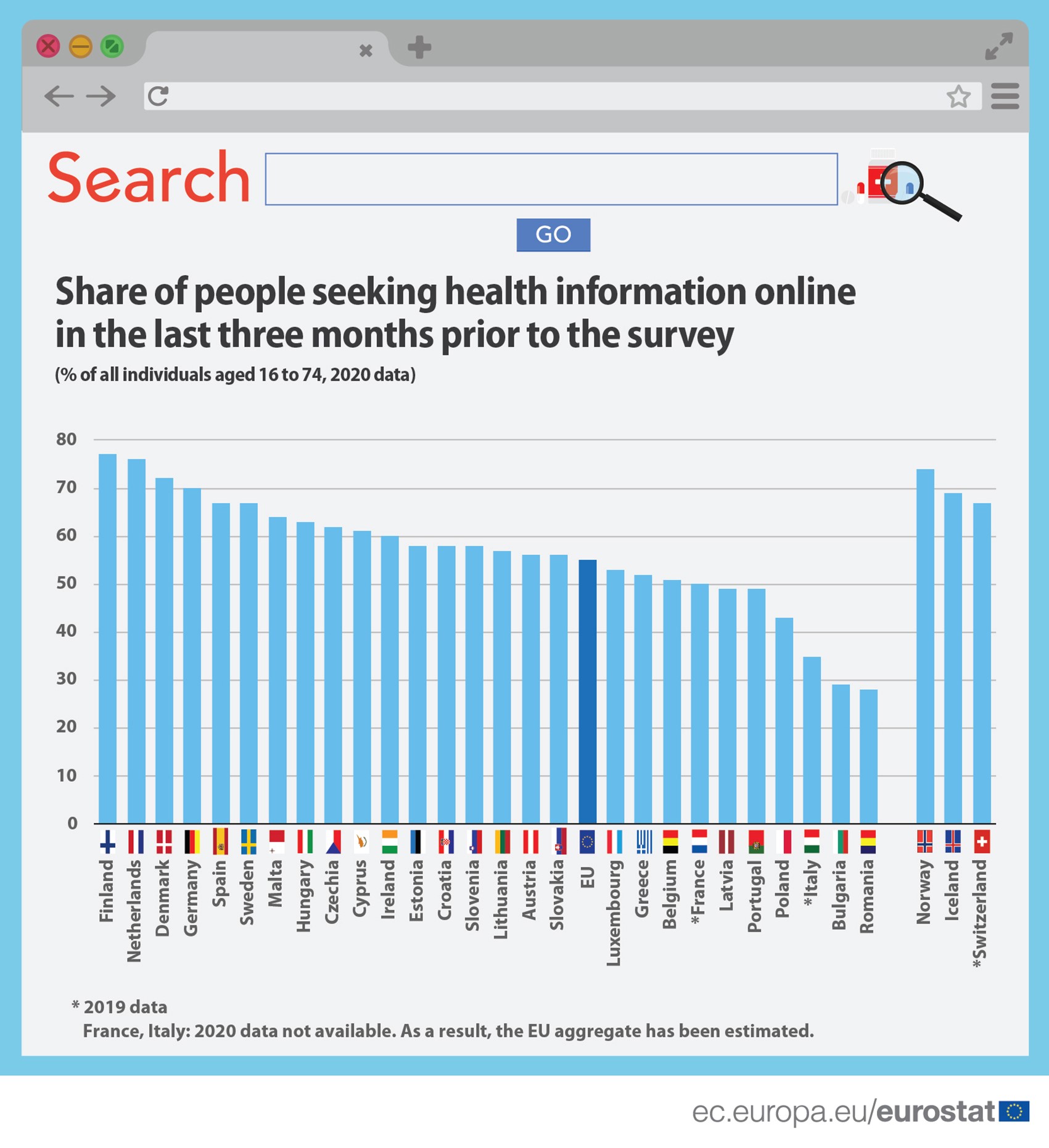In the last three months prior to the 2020 survey on the use of ICT in households and by individuals, one in two EU citizens (55%) aged 16-74 reported that they had sought online health information related to injury, disease, nutrition, improving health or similar. This was two percentage points (pp) higher than the previous year (53%) and up by 21 pp from 2010 (34%).
In addition, 20% of EU citizens reported that they made an appointment with a practitioner over the internet. Fewer (13%) accessed other health services via a website or app instead of visiting the hospital or a doctor in person, while 11% of citizens accessed their personal health records online.
Online health information: most popular in Finland and the Netherlands, least popular in Romania and Bulgaria
The share of people seeking health information online for private purposes varied across EU Member States. In 2020, the highest share was recorded in Finland, where 77% of people aged 16-74 searched online for health-related topics in the last three months prior to the survey, followed by the Netherlands (76%), Denmark (72%) and Germany (70%).
In contrast, the lowest shares were observed in Romania (28%), Bulgaria (29%), Italy (35%; 2019 data) and Poland (43%).
Source dataset: isoc_ci_ac_i
Czechia and Cyprus reports highest increase in searching for health information online
Over the last decade, the share of individuals seeking health information online has risen in the vast majority of the EU Member States. The highest increase in the number of people looking for health information online was recorded in Czechia (+41 pp) and Cyprus (+40 pp), followed by Spain (+34 pp), Ireland and Croatia (both + 33 pp).
For more information:
- France, Italy: 2020 data not available. As a result, the EU aggregate has been estimated.
- Data come from Community survey on ICT usage in households and by individuals. Further methodological information related to the survey can be found here.
- Data in the database are organised according to the survey year; the results above cover the last 3 months prior to the survey, i.e. the first quarter of 2020. Hence, the reference period refers mainly to the situation before the COVID-19 pandemic started. However, due to COVID-19 restrictions, the fieldwork had to be postponed or extended, and timing of this 3-month reference period varies across countries.
To contact us, please visit our User Support page.
For press queries, please contact our Media Support.


